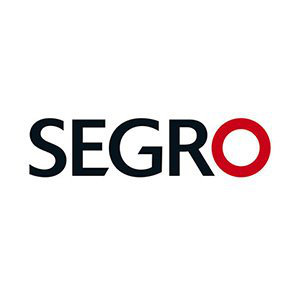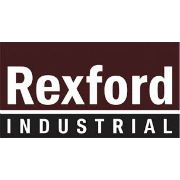Centuria Industrial Reit
ASX:CIP
Profitability Summary
Centuria Industrial Reit's profitability score is 56/100. We take all the information about a company's profitability (such as its margins, capital efficiency, free cash flow generating ability, and more) and consolidate it into one single number - the profitability score. The higher the profitability score, the more profitable the company is.
Score
We take all the information about a company's profitability (such as its margins, capital efficiency, free cash flow generating ability, and more) and consolidate it into one single number - the profitability score. The higher the profitability score, the more profitable the company is.
We take all the information about a company's profitability (such as its margins, capital efficiency, free cash flow generating ability, and more) and consolidate it into one single number - the profitability score. The higher the profitability score, the more profitable the company is.
Score
Score
Margins
Profit margins represent what percentage of sales has turned into profits. Simply put, the percentage figure indicates how many cents of profit the company has generated for each dollar of sale.
Profit margins help investors assess if a company's management is generating enough profit from its sales and whether operating costs and overhead costs are being contained.
Earnings Waterfall
Centuria Industrial Reit
|
Revenue
|
231.6m
AUD
|
|
Operating Expenses
|
-87.1m
AUD
|
|
Operating Income
|
144.4m
AUD
|
|
Other Expenses
|
-45.9m
AUD
|
|
Net Income
|
98.6m
AUD
|
Margins Comparison
Centuria Industrial Reit Competitors
| Country | Company | Market Cap |
Operating Margin |
Net Margin |
||
|---|---|---|---|---|---|---|
| AU |
C
|
Centuria Industrial Reit
ASX:CIP
|
1.8B AUD |
62%
|
43%
|
|
| US |

|
Prologis Inc
NYSE:PLD
|
92.6B USD |
39%
|
45%
|
|
| AU |

|
Goodman Group
ASX:GMG
|
52.9B AUD |
20%
|
41%
|
|
| US |

|
Lineage Inc
NASDAQ:LINE
|
12.5B USD |
7%
|
-12%
|
|
| UK |

|
SEGRO PLC
LSE:SGRO
|
9.3B GBP |
67%
|
88%
|
|
| SG |

|
Ascendas Real Estate Investment Trust
SGX:A17U
|
11.6B |
62%
|
50%
|
|
| US |

|
Eastgroup Properties Inc
NYSE:EGP
|
8.2B USD |
40%
|
36%
|
|
| US |

|
Rexford Industrial Realty Inc
NYSE:REXR
|
7.5B USD |
39%
|
28%
|
|
| US |

|
STAG Industrial Inc
NYSE:STAG
|
6.1B USD |
35%
|
25%
|
|
| US |

|
First Industrial Realty Trust Inc
NYSE:FR
|
6B USD |
41%
|
39%
|
|
| SG |

|
Mapletree Logistics Trust
SGX:M44U
|
5.9B |
72%
|
37%
|
Return on Capital
Return on capital ratios give a sense of how well a company is using its capital (equity, assets, capital employed, etc.) to generate profits (operating income, net income, etc.). In simple words, these ratios show how much income is generated for each dollar of capital invested.
Return on Capital Comparison
Centuria Industrial Reit Competitors
| Country | Company | Market Cap | ROE | ROA | ROCE | ROIC | ||
|---|---|---|---|---|---|---|---|---|
| AU |
C
|
Centuria Industrial Reit
ASX:CIP
|
1.8B AUD |
4%
|
3%
|
4%
|
4%
|
|
| US |

|
Prologis Inc
NYSE:PLD
|
92.6B USD |
7%
|
4%
|
4%
|
3%
|
|
| AU |

|
Goodman Group
ASX:GMG
|
52.9B AUD |
5%
|
4%
|
2%
|
2%
|
|
| US |

|
Lineage Inc
NASDAQ:LINE
|
12.5B USD |
-8%
|
-4%
|
2%
|
2%
|
|
| UK |

|
SEGRO PLC
LSE:SGRO
|
9.3B GBP |
5%
|
3%
|
3%
|
3%
|
|
| SG |

|
Ascendas Real Estate Investment Trust
SGX:A17U
|
11.6B |
7%
|
4%
|
6%
|
6%
|
|
| US |

|
Eastgroup Properties Inc
NYSE:EGP
|
8.2B USD |
8%
|
5%
|
6%
|
5%
|
|
| US |

|
Rexford Industrial Realty Inc
NYSE:REXR
|
7.5B USD |
3%
|
2%
|
3%
|
3%
|
|
| US |

|
STAG Industrial Inc
NYSE:STAG
|
6.1B USD |
6%
|
3%
|
4%
|
4%
|
|
| US |

|
First Industrial Realty Trust Inc
NYSE:FR
|
6B USD |
10%
|
5%
|
6%
|
5%
|
|
| SG |

|
Mapletree Logistics Trust
SGX:M44U
|
5.9B |
4%
|
2%
|
4%
|
3%
|
Free Cash Flow
Free cash flow (FCF) is the money a company has left over after paying its operating expenses and capital expenditures. The more free cash flow a company has, the more it can allocate to dividends, paying down debt, and growth opportunities.
If a company has a decreasing free cash flow, that is not necessarily bad if the company is investing in its growth.















































 You don't have any saved screeners yet
You don't have any saved screeners yet
